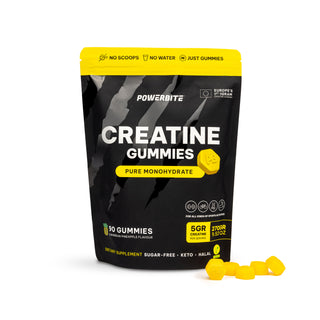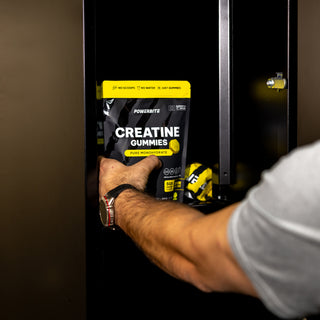Creatine is the supplement for extra muscle strength. There are different types of creatine in different forms. We use this article to explain the mutual differences and advantages and disadvantages. Of course we end up with the best form. Are you ready?
What does creatine do again?
Creatine is a supplement that helps to give you extra muscle strength during your workouts and shortens recovery time after your workouts. The supplement has even more benefits, which we will discuss in detail here . Now that you know the purpose of this substance, it is time to explain the different types:
Creatine monohydrate
This is by far the best known of the types of creatine : monohydrate. It consists of creatine bound to a water molecule, so that your body absorbs it optimally. You can buy this variant in powders, capsules, liquid form, gummies and pills. Most athletes use powders, but that is of course quite a hassle. You don't get the same amount consistently and it's a mess. Monohydrate is considered the gold standard in the sea of options.
Advantages:
-
Proven effective in improving muscle strength and muscle mass
-
Contributes to overall sports performance
-
Is affordable and easily available
Cons:
- Sometimes causes stomach upset or bloating at high doses
Micronized creatine
Micronization is a process in which the particles of creatine are made smaller. This can lead to better solubility and faster saturation of creatine in the muscle tissue.
Advantages:
- Possible rapid absorption with less chance of stomach complaints
Cons:
- More expensive than other forms without significant benefit in performance
Creatine citrate / Creatine nitrate
Creatine citrate is one of the types of creatine. The special thing about these forms is that they are bound to citric acid or nitrate. It is a popular choice for people who are hypersensitive to stomach problems.
Advantages:
-
Perhaps more soluble than monohydrate, due to the citric acid
Cons:
- Less research into availability and effectiveness
- Often more expensive than monohydrate
Creatine Ethyl Ester, Malate and Pyruvate
These are different forms of creatine, often sold together as an advanced creatine formula. These forms are bound to various organic acids, which may optimize absorption. Please note: there have only been limited studies into this and is therefore not a guarantee.
Advantages:
- It is claimed to be better absorbed than other forms
Cons:
- Little scientific evidence
- More expensive
Creatine Magnesium Chelate
This type of creatine is bound to magnesium, which improves the absorption and replenishment of magnesium. This has benefits for muscle function and overall health.
Advantages:
- It is claimed to be better absorbed than other forms
- Magnesium supports muscle function
Cons:
- Little scientific evidence
- More expensive
Creatine Hydrochloride
To maximize stability and solubility, this form of creatine is bound to hydrochloride. It is a popular choice for people prone to gastrointestinal side effects.
Advantages:
- Reduced chance of stomach upset and water retention
Cons:
- Little scientific evidence
- More expensive
Creatine Blends
Blends are natural multiple types of creatine together.
Advantages:
- Ability to combine benefits of different types
Cons:
- Effects of individual shapes difficult to determine
- More expensive
Do you want to use the Gold standard? Then choose creatine gummies from Powerbite. This allows you to benefit from all the benefits and choose convenience. The gummies are easy to chew, even just before your workout.








